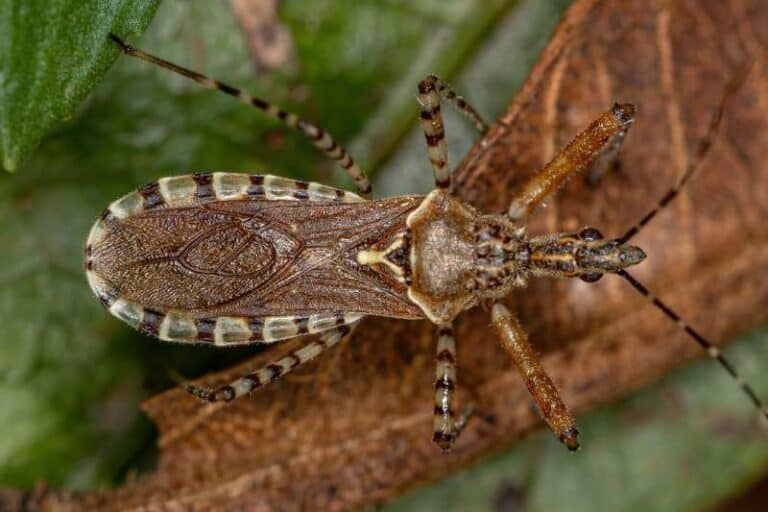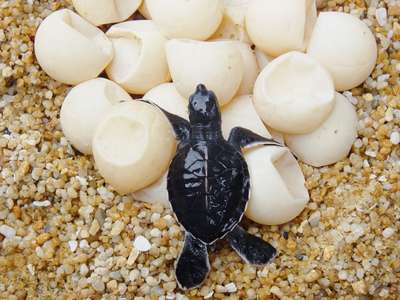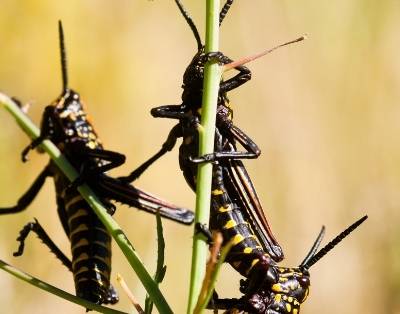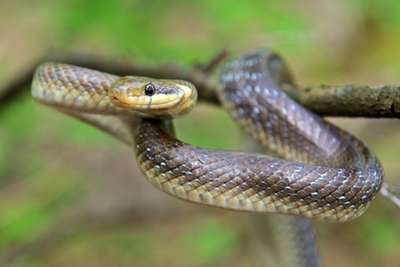Eastern box turtles (Terrapene carolina) are ground-based turtles found throughout the eastern and southeastern United States. People often encounter eastern box turtles during the course of their daily lives, giving the impression that these reptiles are both common and doing well as a species.
But is this impression true? This post discusses the state of the eastern box turtle and some of the factors that impact their individual and species well being.
Eastern box turtles are widespread throughout the eastern United States but populations are declining due to habitat loss and fragmentation, mortality from automobiles, environmental toxins, and the exotic pet trade, as well as low reproductive success and predation, especially of hatchlings.

Eastern box turtles are found in a wide swath of the eastern United States from southern Massachusetts south through Florida and extending west to Michigan, southern Illinois, Missouri, and eastern Oklahoma, Kansas and Texas.
In one study of four selected areas, adult population densities ranged from 0.81 turtles per hectare (approximately 2.5 acres) to 3.62 turtles per hectare, with more males than females identified in two of the four sites and equal ratio of males to females at the remaining two sites. Juveniles within the study areas ranged from none to more than 30% of the turtles in the tested ranges (Nazdrowicz et al. 2008).
Unlike many other animals, eastern box turtles rely solely on encountering others of their species at random in order to locate mates. Males do not follow scent trails laid by females, neither sex makes noise to attract individuals of the opposite sex across long distances and they do not naturally congregate in a specific location during mating season.
In addition, two eastern box turtles must be able to see each other before they become aware of each other’s presence. Sexually receptive males will fail to notice sexually receptive females who are mere inches away if the female is hidden visually (Beltzer and Seibert 2009).
This reliance on chance and close visual cues leads to some interesting behaviors.
First, these turtles are remarkably tolerant of other individuals in the same space. They are not territorial and several unrelated turtles can be found in the same small area without conflict. For the most part, they ignore each other until it is time to mate. But even then, male turtles do not often engage in dominance contests to win the right to mate with a female, which is unusual in the animal world. If a sexually receptive male encounters a sexually receptive female, they will mate.

Second, males can accidentally waste time and energy investigating other turtles who are not viable mates.
Eastern box turtles evolved minimal sexual dimorphism, which means that the males and females generally look very similar to each other, as do sexually immature juveniles and adults. “Movement, not sex, was the primary attractant for test males” in a study of how male box turtles find mates (Belzer and Seibert 2009). So a male has to put some effort into determining if a fellow turtle is a potential mate every time he encounters one.
Third, females evolved the ability to store sperm from a successful mating, sometimes up to several years. This is an evolutionary hedge against the possibility that even sexually mature turtles will fail to encounter a mating opportunity in any given year.
Unfortunately, even though the ability to store sperm is a clever evolutionary trick to offset the potential lack of mating opportunities year over year, eastern box turtles still suffer from poor reproductive success overall.
First, turtle eggs are not always fertilized when laid; in fact, some nest studies have shown that entire clutches of eggs were completely infertile.
Second, both eggs and hatchlings suffer extreme predation. Raccoons (Procyon lotor) are the most notorious predators and usually do the most damage but other predators such as foxes, coyotes, and especially snakes also destroy huge numbers of eggs and hatchlings every year. In a study by Beth A. Flitz and Stephen J. Mullin, 21 out of 24 nests (87.5%) of nests were destroyed by predators within 72 hours of the eggs being laid, with 18 of the 21 nests destroyed within the first 24 hours (Flitz and Mullin 2006).
All of these factors contribute to an alarming decline in the viability of the current eastern box turtle population; they simply aren’t replacing the adults lost to threats such as getting run over by motor vehicles fast enough to sustain the species. Therefore, they are listed as “Vulnerable” by the International Union for Conservation of Nature and their numbers are dwindling with every passing year.
Scientists, government officials and volunteers from the public are working hard to save the species (good people, all). Traditional conservation interventions like translocating individuals out of dangerous habitats and into more protected environments have shown some success with eastern box turtles (Henriquez et al. 2017) but requires active, sustained effort. Ideally, we would protect their habitats up front rather than attempt to save individuals after the fact but every little bit will help these charming animals.
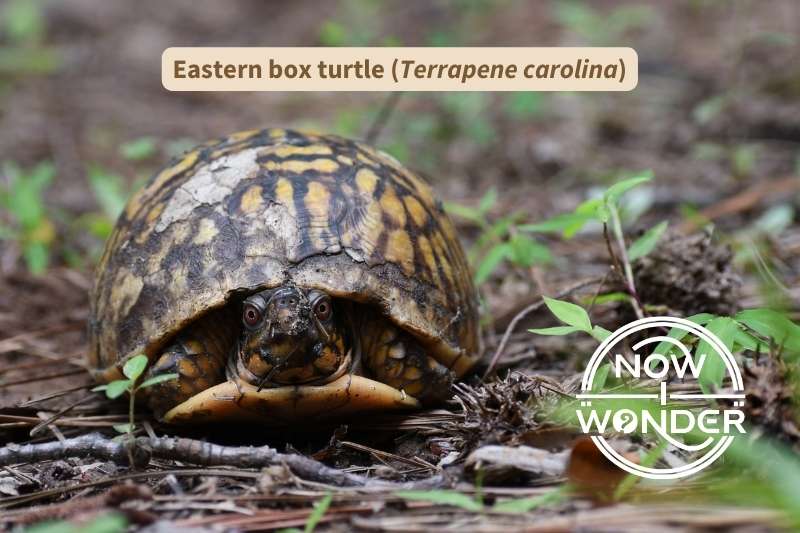
Are eastern box turtles nice?
Eastern box turtles are “nice” in the sense that they avoid direct physical confrontation by withdrawing into their shells when threatened. However, box turtles are omnivores that eat a variety of invertebrates such as insects and snails and thus could be considered “not nice” by those creatures.
Eastern box turtles have a special ability to fully retract their bodies into their hard, domed shells. The undersides of their shells (called the “plastron”) have special hinged structures that the turtles can close tightly over the openings, thus sealing their soft, vulnerable body inside their protective shells.
This species can close their shells so tightly that a blade of grass can’t be slipped through the gap. The turtles will remain locked into their shells until they deem it safe to emerge.
While discretion is the better part of valor in the minds of eastern box turtles, they will attempt to fight if for some reason they can’t retract into their shells. This can happen to wild turtles whose shells have been damaged such as by a car strike and to pet turtles which have been allowed to become overweight.
Eastern box turtles can theoretically bite with their sharp, slicing beaks and kick with their clawed feet but these attempts at active physical defense aren’t very effective. Turtles are very slow (they are rather notorious for it) so most of the time, their best defense is retreating into their shells until their predators lose interest.
What kills eastern box turtles?
Predators
| Common raccoon (Procyon lotor) | Virginia opossum (Didelphis virginiana) |
| Coyote (Canis latrans) | Red fox (Vulpes vulpes) |
| American crow (Corvus brachyrhynchos) |
Infections and Diseases
| Ranavirus infections (causes severe respiratory disease that can lead to rapid death in turtles; possibly transmitted by mosquitoes) (Kimble et al. 2015) | Polymicrobial necrotizing bacterial infections (eats away at limb tissue causing turtles to lose appendages) |
Man-made dangers
| Crushing injuries from being run over by cars | Lacerations from being slashed by power mowers. |
| Poaching for exotic pet trade | Improper pet care |
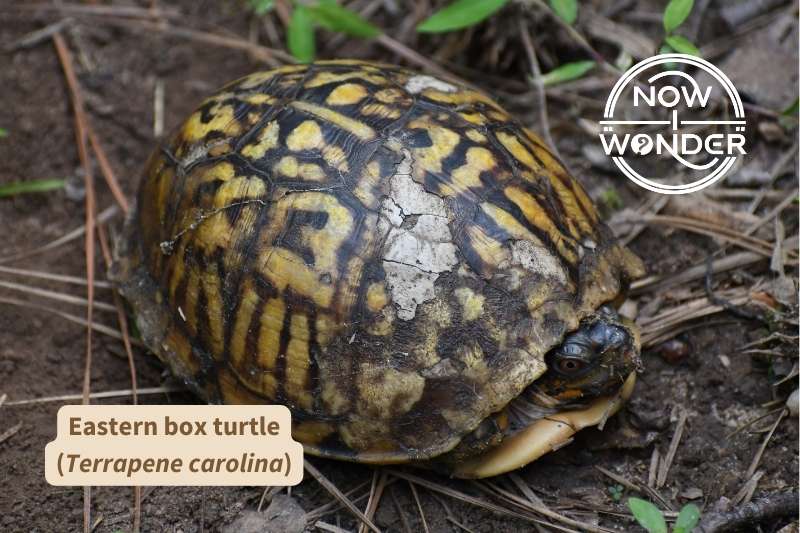
How can I help eastern box turtles?
Here are some important steps that you can take to help prevent eastern box turtle deaths from man-made causes.
- Set all agricultural, landscape and roadside mowers to mow at least 6 inches (15 cm) high and higher is better.
- Sweep the landscape prior to mowing and carefully and gently relocate any turtles to areas outside the mowing area.
- Never collect eastern box turtles from the wild; enjoy observing them in their natural habitat and resist the temptation to bring them home with you.
- Avoid purchasing eastern box turtles as pets to avoid accidentally supporting poaching and illegal trade in exotic pets.
- If you can do so safely, help an eastern box turtle out of the road or street, especially if the turtle is facing a high curb. However, always make your own safety the priority and do not intervene if attempting to help the turtle would put you at risk.
- If you relocate a turtle, make every effort to point it in the direction it was already going. This is especially important if you’ve helped it out of a road as it was likely crossing in that direction for good reason.
- Support initiatives geared towards habitat protection in your local area.
- Consider growing a “natural lawn” with native plants rather than traditional grass. This kind of landscape can provide shelter, food, and protection, especially if it does not need to be mowed.
- Consider helping the scientific community by volunteering as a citizen scientist. Below are some great resources to check out.
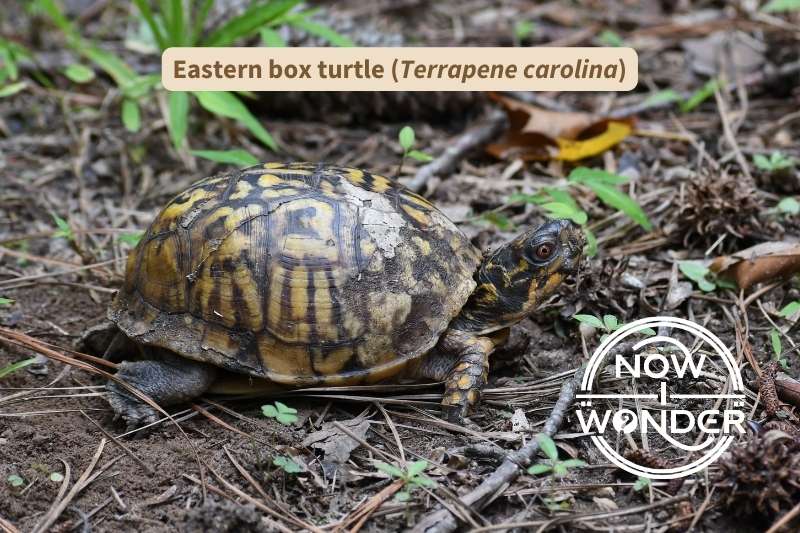
Opportunities to help eastern box turtles
Like so many other animals throughout the world, the eastern box turtle is struggling to survive. Despite an incredibly long history, the adaptations that served them successfully in the past are succumbing to a world that demands too much from them.
Smart, dedicated humans are working hard to reverse their decline and you can help. Here are some organizations that are working to save these beautiful and charming reptiles. Please consider checking them out!
- Status Assessment and Conservation Plan for the Eastern Box Turtle. Website: https://www.northeastturtles.org/eastern-box-turtle.html
- Box Turtle Connection, University of North Carolina Greensboro. Website: https://boxturtle.uncg.edu/, Facebook Group: https://www.facebook.com/BoxTurtleConnection
- Report a Box Turtle. Google site with resources and volunteer opportunities in Arizona, North Carolina, South Carolina, Texas and Virginia. Website: https://sites.google.com/site/helpingboxturtles/home/Reportaboxturtle
Related Now I Wonder Posts
To learn more about terrestrial and freshwater turtles, check out these other Now I Wonder posts:
- Eastern Box Turtle FAQs
- Can you find turtles in rivers?
- River Cooter Turtles: Almost a research enigma
To learn more about turtles in general, check out these other Now I Wonder posts:
- Can turtles swim?
- How do turtles swim with shells?
- Why do turtles float?
- Why does cold water kill sea turtles?
References
Adamovicz L, Allender MC, Archer G, Rzadkowska M, Boers K, Phillips C, Driskell E, Kinsel MJ, Chu C. 2018. Investigation of multiple mortality events in eastern box turtles (terrapene carolina carolina). PLoS One. 13(4). Available at: https://journals.plos.org/plosone/article/figure?id=10.1371/journal.pone.0195617.t002
Belzer WR, Seibert S. 2009. How do male box turtles find mates? Turtle and Tortoise Newsletter. (13):11-21. Available at: https://meridian.allenpress.com/ttn/article-abstract/doi/10.2744/1526-3096-13.1.2/10829/The-Newsletter-of-Chelonian-Conservationists-and?redirectedFrom=PDF#page=11
Flitz BA, Mullin SJ. 2006. Nest-site selection in the eastern box turtle, terrapene carolina carolina, in illinois. Chelonian Conservation and Biology. 5(2):309-12. Available at: https://doi.org/10.2744/1071-8443(2006)5[309:NSITEB]2.0.CO;2
Henriquez MC, Macey SK, Baker EE, Kelly LB, Betts RL, Rubbo MJ, Clark JA. 2017. Translocated and resident eastern box turtles (terrapene c. carolina) in new york: Movement patterns and habitat use. Northeast Nat. 24(3):249-66. Available at: https://doi.org/10.1656/045.024.0303
Kimble SJ, A., Karna AK, Johnson AJ, Hoverman JT, Williams RN. 2015. Mosquitoes as a potential vector of ranavirus transmission in terrestrial turtles. EcoHealth. 12(2):334-8. Available at: https://doi.org/10.1007/s10393-014-0974-3
Nazdrowicz NH, Bowman JL, Roth RR. 2008. Population ecology of the eastern box turtle in a fragmented landscape. J Wildl Manage. 72(3):745-53. Available at: https://doi.org/10.2193/2005-521

